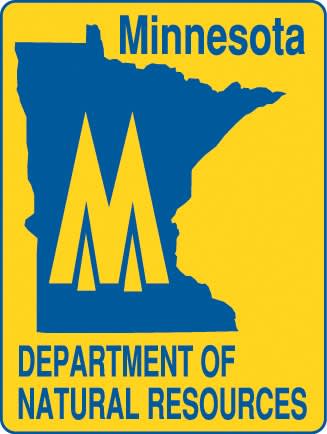Minnesota DNR Wraps Up Zebra Mussel Field Work on Lake Irene and Rose Lake; Confirms New Infestations in Otter Tail County

Rose Lake and Lake Irene
Last fall, Minnesota Department of Natural Resources (DNR) biologists investigated two separate cases where boat lifts used in zebra mussel infested lakes had been moved to noninfested waters (Lake Irene in Douglas County and Rose Lake in Otter Tail County).
In both lakes, only juvenile zebra mussels were found in a small, localized area. This offered the DNR the unique opportunity to attempt to eradicate zebra mussels by treating both areas with copper sulfate, a common chemical used to treat snails that cause swimmers itch.
DNR biologists collected water samples to look for larval zebra mussels (veligers) and conducted scuba and lake equipment searches to look for juvenile and adult zebra mussels throughout the 2012 open water season. Field work to evaluate the eradication efforts was completed this past week.
“We did not find any veligers in our water samples or large zebra mussels during our scuba searches this summer,” said Nathan Olson, DNR invasive species specialist in Fergus Falls. “However, during our fall searches, we did find adult zebra mussels in both lakes.”
Olson added that because monitoring efforts did not produce any veligers or juvenile zebra mussels, the DNR cannot confirm that zebra mussels have reproduced in either lake. The recent find of adult mussels means that despite early detection and a rapid DNR response, efforts to kill the zebra mussels in these lakes were not successful.
DNR staff will continue to monitor these lakes next year to evaluate the zebra mussel populations.
Lake Miltona and lower Otter Tail River
Early last week, DNR confirmed the presence of juvenile zebra mussels in Lake Miltona. Lake Miltona is located north of Lake Carlos and downstream of Lake Irene in Douglas County.
DNR biologists found numerous small zebra mussels on several boatlifts and rocks in a small area of the lake. No adult zebra mussels were found.
DNR has also confirmed that zebra mussels have been found in the Otter Tail River below Orwell Reservoir. Low water levels in the Otter Tail River below Orwell Reservoir revealed zebra mussels of various sizes attached to rocks and debris.
“The presence of zebra mussels below Orwell Reservoir is not surprising as these zebra mussels were found downstream of where the Pelican River enters the Otter Tail River,” said Olson. “Zebra mussels were discovered in the Pelican River and Pelican Lake near Pelican Rapids in September 2009.”
The DNR has since seen zebra mussels move downstream into Lizzie and Prairie lakes, and it now appears they have found their way into the lower Otter Tail River.
As a result of these zebra mussel discoveries, Lake Miltona and the lower reach of Otter Tail River, from the confluence of the Pelican River downstream to the Bois De Sioux River confluence, will be designated as infested waters. Lake Ida will also be designated for precautionary reasons because it is the next lake downstream of Miltona. The Pelican River is already designated as infested waters from Bucks Mill Drive downstream to the confluence with Otter Tail River.
Kerbs, Paul and Rusch lakes in Otter Tail County
The DNR has confirmed that water samples taken late this summer from Kerbs, Paul and Rusch lakes in Otter Tail County contained zebra mussel larvae (veligers).
In association with a proposed water outlet project, the Little McDonald, Kerbs and Paul Lake Improvement District (LMKP-LID) contracted with RMB Environmental Laboratories, Inc. (RMB Labs) in Detroit Lakes to collect an August water sample from Little McDonald, Paul, Rusch and Kerbs lakes. The proposed water outlet project would address high water issues in the surrounding area by connecting these lakes to several other lakes before the water enters the Otter Tail River system.
“High water in this area has caused damage to shorelines, property and roads,” said Roger Neitzke, president, LMKP-LID. “At present, there is no outlet in the area to alleviate this problem.”
One of the conditions of outletting the water was that if any aquatic invasive species were found, the outlet (which has not been constructed yet) would be closed. This prompted the LMKP-LID to voluntarily test the lakes for zebra mussel veligers as a precaution, prior to construction.
As part of their protocol, RMB Labs contacted the DNR with the veliger findings. The samples were sent to the New York State Museum, which verified the presence of zebra mussel veligers. No adult zebra mussels were found after DNR biologists inspected hundreds of docks and boat lifts in these waters.
“At this time, we aren’t sure where the adult zebra mussel population exists,” said Olson. “It is surprising that no veligers were found in water samples taken from Little McDonald Lake although it connects with the three lakes where veligers were found.”
Although adult zebra mussels have not been verified, the DNR will take a precautionary approach by designating all four lakes as infested waters.
These recent discoveries reinforce the importance of practicing proper aquatic invasive species preventative methods. The DNR reminds folks to inspect all water-related equipment when it is removed from the water and report any suspected zebra mussel discoveries to the local DNR area office. Folks should also keep in mind that moving docks and boat lifts from one lake to another is another source of spreading aquatic invasive species. Boat lifts and docks are of particular concern because they sit in the water for extended periods, giving zebra mussels a greater opportunity to attach themselves.
State law requires all boat lifts, docks and swim rafts removed from any water body must remain out of the water (and dry) for 21 days before being placed into another water body in order to kill zebra mussels and other aquatic invasive species.
More information about aquatic invasive species is available on DNR website at www.mndnr.gov/ais.

